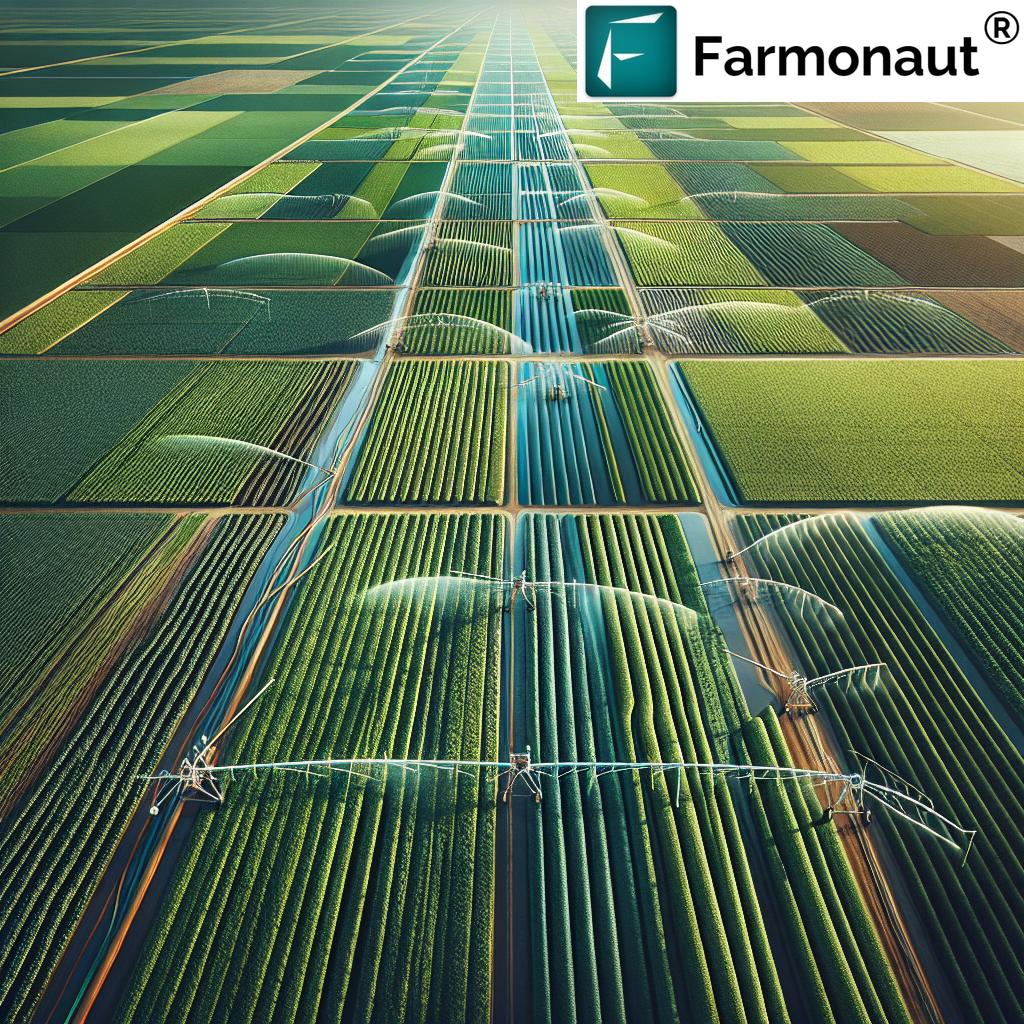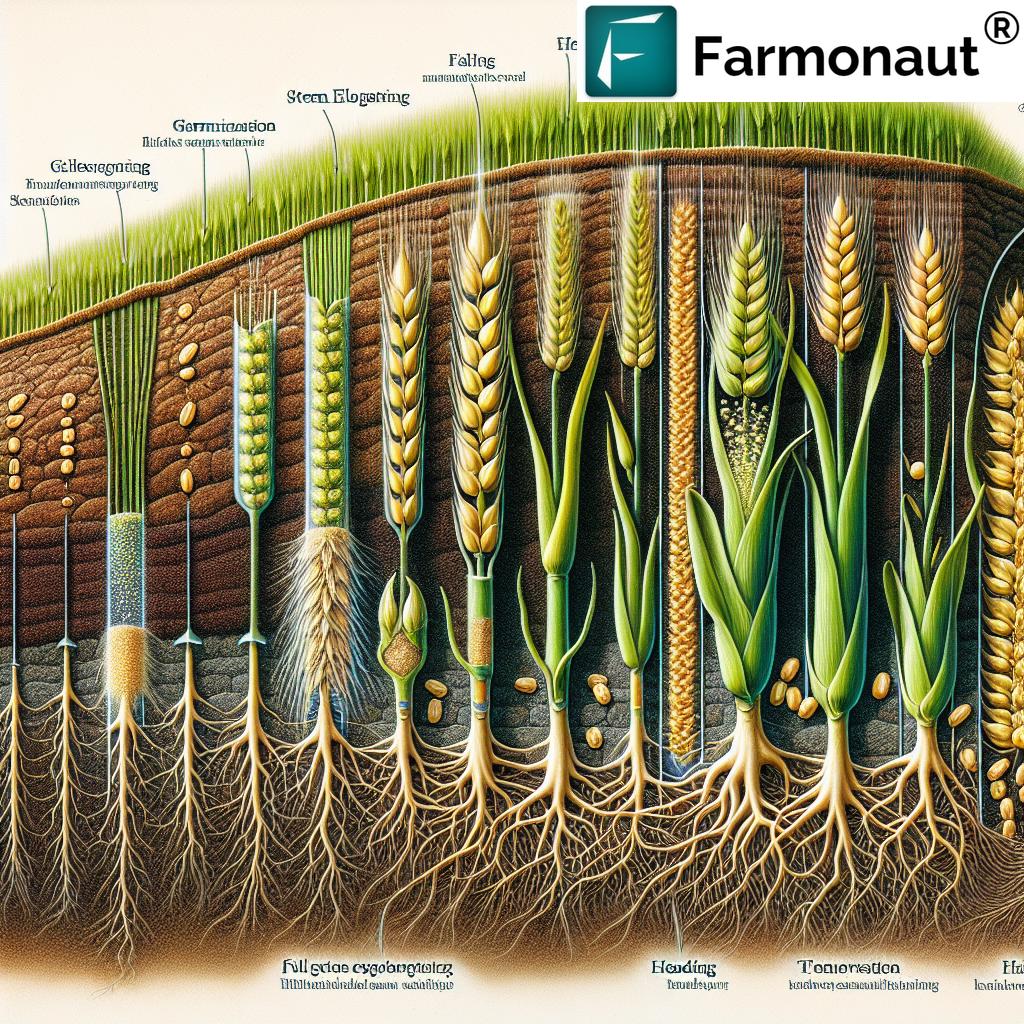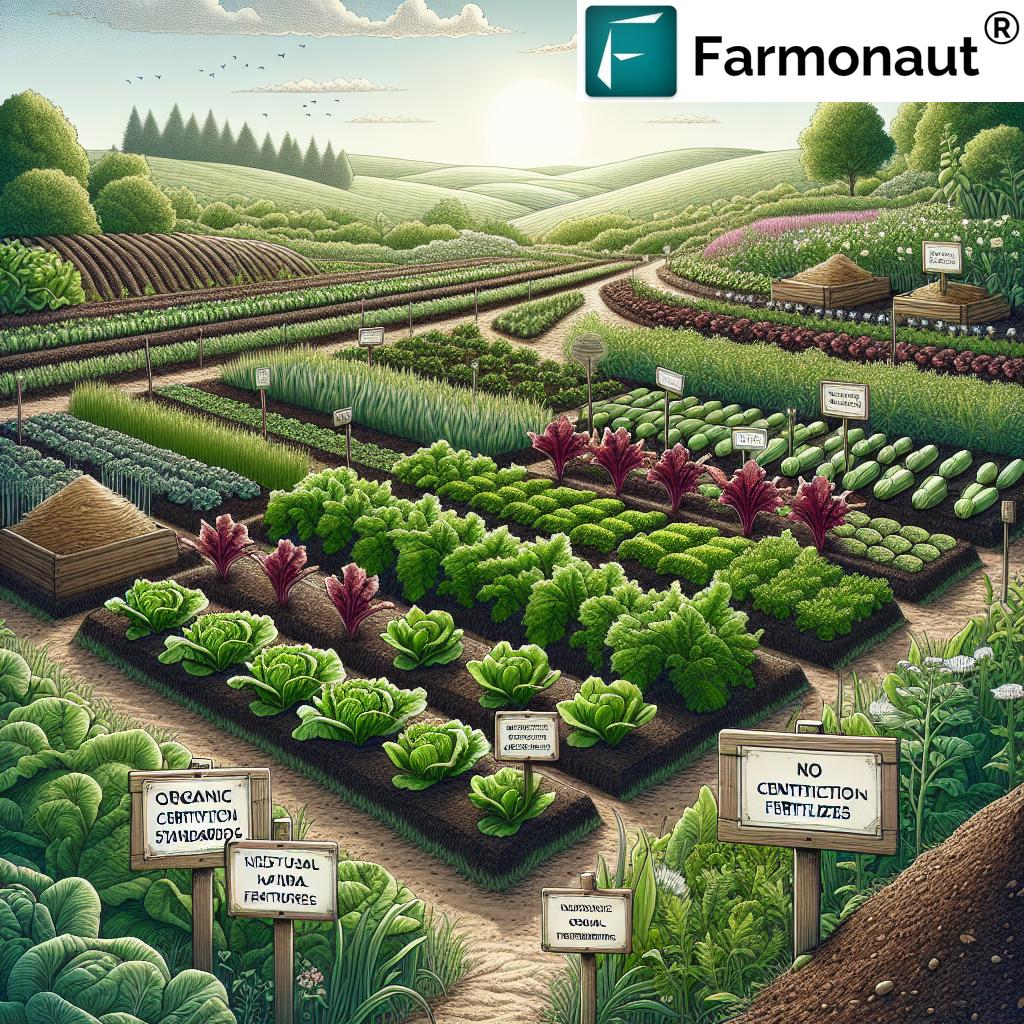Are There Environmental Benefits to Modern Wood Processors? Environmental Benefits of Modern Wood Processors in Forestry and Agriculture: A 2025 Perspective
“Modern wood processors can reduce forestry waste by up to 40% compared to traditional methods in 2025.”
- Introduction: 2025 Perspective on Environmental Benefits
- Why Ask: Are There Environmental Benefits to Modern Wood Processors?
- How Modern Wood Processors Revolutionized Forestry & Agriculture
- Efficient Resource Utilization: Precision and Waste Reduction
- Reduced Energy Consumption and Lower Emissions
- Improved Waste Management: Enhancing the Circular Economy
- Supporting Sustainable Forestry Practices
- Minimizing Soil and Habitat Disturbance
- Advanced Data Integration for Environmental Monitoring
- Comparison Table: Traditional vs. Modern Wood Processors
- Farmonaut’s Role in Promoting Sustainable Wood Processing
- The Road Ahead—Innovation, Regeneration, and Beyond
- FAQs: Are There Environmental Benefits to Modern Wood Processors?
- Conclusion: Why Modern Wood Processors Are Critical in 2025
Introduction: 2025 Perspective on Environmental Benefits
The increasing global awareness of ecological issues and commitments to sustainability targets in 2025 have redefined the role of technology across all sectors. Within forestry and agriculture, modern wood processors emerge not only as productivity tools, but as critical instruments in environmental stewardship. The central question—are there environmental benefits to modern wood processors?—demands a comprehensive and current perspective.
By combining advanced technology, data-driven management, and innovative practices, these processors have begun to transcend traditional limitations. They are now essential for those aiming to reduce waste, lower emissions, optimize resource utilization, and promote sustainable practices.
Why Ask: Are There Environmental Benefits to Modern Wood Processors?
The debate around wood harvesting and processing is not new. What has changed is the intensifying global focus on reducing environmental footprints, achieving carbon neutrality, and preserving biodiversity through technological innovation. This is where modern wood processors have revolutionized the scene by:
- Integrating precision technologies that minimize material waste
- Lowering carbon emissions with enhanced energy efficiency
- Optimizing resource use to support forest regeneration and protect habitats
- Employing advanced data collection for transparent, environmentally informed management
The shift from older machinery to current equipment reflects humanity’s need to harmonize productivity with planet health.
“Advanced processors cut emissions in forestry operations by approximately 30%, supporting global sustainability goals.”
How Modern Wood Processors Revolutionized Forestry & Agriculture
Modern wood processors have transcended their traditional role thanks to leaps in automation, AI, real-time data analysis, and energy-efficient designs. Their innovation lies in combining these elements, resulting in systems that support:
- High-precision cutting and conversion of timbers, logs, and by-products with minimal waste
- Reducing disturbance to soil and habitat via machine learning-based movement and light-weight design
- Enhanced energy efficiency and significant emissions reduction compared to conventional models
- Improved waste management through by-product collection and reuse
The result: Modern processors not only bolster the economy but are pivotal for preserving ecosystems and conserving natural resources. Let’s examine these key environmental benefits in detail.
Efficient Resource Utilization: Precision and Waste Reduction
The Key Benefit—Minimizing Forest Waste
At the core of modern wood processors is their ability to maximize the utilization of wood resources. By employing computer numerical control (CNC), laser-guided cutting, and AI-powered planning, they:
- Achieve precision down to the cubic millimeter, meaning fewer logs are wasted per operation
- Convert logs into lumber, chips, bark fragments, and sawdust, with minimal material discarded
- Ensure that every cubic meter counts while relieving pressure on additional tree harvests
According to 2025 estimates, modern wood processors can reduce forestry waste by up to 40% compared to traditional machinery.
Why Does This Matter for Sustainability?
Efficient resource utilization supports:
- Slower forest depletion—preserving ecological balance and biodiversity
- Lower carbon footprint per volume of timber produced
- Better economic returns for forestry and agriculture sectors via optimized processing
This waste reduction connects directly to initiatives centered around a circular economy and sustainable resource stewardship.
Comparison Table: Traditional vs. Modern Wood Processors
| Processing Method | Waste Reduction (%) | Emission Reduction (%) | Energy Efficiency Improvement (%) | Sustainable Practices Adoption (%) |
|---|---|---|---|---|
| Traditional Wood Processing | 10-20% | 5-8% | 5-10% | 15-20% |
| Modern Wood Processors | 35-45% | 25-35% | 25-35% | 60-75% |
As highlighted above, the leap in waste and emission reduction as well as sustainability adoption is dramatic—showcasing one of the primary environmental benefits to modern wood processors as of 2025.
Reduced Energy Consumption and Lower Emissions
Modern wood processors are typically engineered for energy efficiency, using a variety of means to reduce energy consumption and minimize emissions:
- Hybrid and electric engines consume less fuel compared to conventional diesel-driven models, leading to lower greenhouse gas production
- Advanced hydraulic systems optimize power use, limiting unnecessary energy expenditure
- Increased use of renewable energy sources within forestry operations
Field data for 2025 show that advanced processors can cut emissions by approximately 30% compared to older equipment. This significantly reduces the carbon footprint of forestry and agriculture operations globally.
Benefits for Rural and Remote Environments
Many forestry operations occur in rural and remote areas, which can be particularly vulnerable to air pollution and resource depletion. By adopting modern wood processors:
- Air pollution is reduced, promoting cleaner local environments
- Forestry businesses benefit from more efficient use of fuel and manage cost better
- There is a considerable decrease in the environmental impact of operations
In addition, advanced monitoring —including satellite-based carbon footprint tracking solutions—enables data-driven improvements to emissions management.
Improved Waste Management: Enhancing the Circular Economy
Modern wood processors are designed to facilitate better management of residues and by-products including sawdust, bark fragments, and offcuts. In the past, much of this material was simply considered waste and sent to landfills or burned, causing further air pollution.
Enabling the Circular Economy
By collecting and repurposing wood residues, innovations in processing now allow for:
- Production of biomass energy, supporting the transition away from fossil fuels
- Creation of mulch and soil amendments—key in sustainable agriculture
- Manufacturing of wood-based composites, further reducing dependency on synthetic materials
- Lower landfill rates and direct reduction in ecological footprint
This waste management revolution is not only environmental but also economic, promoting resource efficiency and supporting jobs in secondary manufacturing and bioenergy.
Download Farmonaut’s app on Web, Android, or iOS for real-time satellite-based resource monitoring and AI-powered advisory. See more about large scale farm management for complete field supervision and optimization tools.
For integration into your processing and logistics system, explore the Farmonaut API and access detailed API Developer Documentation.
Supporting Sustainable Forestry Practices
Integration of modern wood processors with sustainable forestry management standards, including FSC and PEFC certification, has enabled companies to align harvesting with ecological limits. These advanced systems:
- Make selective logging more viable by handling various tree sizes and species with minimal habitat disturbance
- Ensure harvesting operations leave enough biomass for healthy regeneration and continued ecosystem services
- Provide transparency and data for audits and curb illegal or unsustainable harvesting
When harvesting is made more efficient and less wasteful, there is less pressure to exploit new forests. This is vital for global biodiversity protection, climate regulation, and water cycle maintenance.
Minimizing Soil and Habitat Disturbance
A significant ecological impact of timber processing is the compaction of soil, increased erosion, and habitat fragmentation. However, modern wood processors use:
- Lighter, ergonomically designed equipment for reduced compaction
- Track and wheel systems that evenly distribute weight, minimizing disturbance to the soil structure and hydrology
- GPS and real-time data for precise route planning with the fewest possible passes over vulnerable land
By minimizing soil disturbance, these processors provide multiple benefits:
- Reduced risk of erosion and runoff into water bodies
- Better forest regeneration due to healthier soil
- Less habitat disruption for wildlife and a more resilient ecosystem
The adoption of these techniques marks a shift toward nature-positive forestry and agriculture practices in 2025.
Advanced Data Integration for Environmental Monitoring
One of the standout environmental advantages of modern wood processors is the built-in data integration capability. Many 2025 models routinely collect and transmit data on:
- Timber volumes, wood types, and site conditions—enabling detailed forest and processing management
- Species tracking to ensure protection of rare or endangered varieties
- Traceability data for environmental compliance and market certification
This wealth of data allows for:
- Optimization of harvest plans to maintain biodiversity and promote sustainable yield
- Improved transparency and accountability in sustainable forest management
- Support for blockchain-based traceability solutions for timber and associated products
Markets and stakeholders increasingly demand proof of sustainability—data-driven solutions help processors meet those expectations.
Farmonaut’s Role in Promoting Sustainable Wood Processing
While Farmonaut is not a manufacturer of wood processing equipment, we empower forestry and agriculture sectors with satellite-driven insights, real-time impact monitoring, and actionable data tools. Our platform’s capabilities include:
- Satellite-based environmental monitoring for forest health, soil conditions, and emissions tracking
- AI-powered advisory (Jeevn AI)—offers weather forecasts and targeted productivity strategies for forestry and agriculture
- Blockchain-based traceability—ensures verification and transparency for wood and timber supply chains
- Resource and fleet management tools—optimize efficient and sustainable use of equipment across operations, supporting sustainability at scale (Fleet Management Solution)
- Real-time environmental impact dashboards for tracking the carbon and ecological footprint of agroforestry projects or wood processing operations
Our mission is to make satellite-driven insights affordable, actionable, and accessible for everyone—driving sustainable practices and supporting environmentally responsible wood processing globally.
For those seeking to standardize and verify their processes, head to Farmonaut’s carbon footprinting product page for dedicated environmental impact tracking.
The Road Ahead—Innovation, Regeneration, and Beyond
Looking to 2025 and beyond, we anticipate that modern wood processors will play an ever-increasing role in environmental protection, sustainable management, and ecosystem regeneration. Key future trends include:
- Increased use of AI and machine learning for site-specific optimization and minimal impact harvesting
- Greater integration with satellite platforms capable of real-time health, water, and soil monitoring
- Development of eco-friendly materials and low-impact machinery for sensitive forest areas
- Automated data workflows for instant sustainability compliance reporting
- Expanded application of traceability systems within global timber supply chains, strengthening accountability and transparency
The synergy between advanced processors, environmental monitoring, and data-driven management will be essential for balancing economic needs with biodiversity and ecosystem preservation.
FAQs: Are There Environmental Benefits to Modern Wood Processors?
1. What are the primary environmental benefits of modern wood processors in 2025?
Modern wood processors deliver significant environmental benefits—chiefly reducing waste by up to 40%, lowering carbon emissions by around 30%, and optimizing resource utilization. Precision technologies ensure minimal material is discarded, lessening the impact on forests and habitats.
2. How do modern processors compare with traditional wood processing methods?
Compared to traditional methods, modern processors achieve 2–3x higher waste reduction, far greater emission reductions, and a much higher adoption rate of sustainable practices. (See the comparative table above.)
3. In what ways do modern processors help conserve forest ecosystems?
By using less timber to produce the same amount of products and supporting selective harvesting, these systems reduce the pressure to cut additional trees and help maintain healthy, biodiverse forests.
4. What is the significance of data integration in modern wood processing?
Integrated data collection and analysis allow for environmentally informed decisions, support traceability, and ensure compliance with sustainability standards—crucial for global eco-friendly forestry operations.
5. Can modern processors support circular economy principles?
Absolutely. By repurposing residues and by-products (sawdust, bark, and offcuts) for uses like biomass energy and green manufacturing, processors lower landfill rates and promote circular resource loops.
6. How does Farmonaut fit into environmentally sustainable wood processing?
We provide satellite-based monitoring, carbon footprinting, and AI-powered resource management tools for forestry and agriculture—empowering our users to adopt more sustainable, precise, and data-driven practices while supporting global environmental objectives.
7. Where can I access Farmonaut’s tools for monitoring emissions, resource use, or traceability?
Farmonaut’s solutions are available via web and mobile apps for real-time insights, as well as API integration and through a variety of product modules, such as carbon footprint tracking, traceability, and large scale farm management tools.
Conclusion: Why Modern Wood Processors Are Critical in 2025
As environmental issues intensify and global sustainability targets become more ambitious for 2025 and beyond, the question—are there environmental benefits to modern wood processors?—is clearly answered. Through advanced, precision technologies, improved energy and waste management, and data-driven operations, modern wood processors have truly become the linchpin of eco-responsible forestry and agriculture.
Their integration with digital monitoring tools—such as those provided in Farmonaut’s platform—ensures not just compliance, but leadership in a new era where productivity and environmental preservation go hand in hand. The future is one where innovation, sustainability, and technology coalesce to optimize resource use, protect our forests, reduce carbon footprints, and maintain the resilience of Earth’s vital ecosystems.










